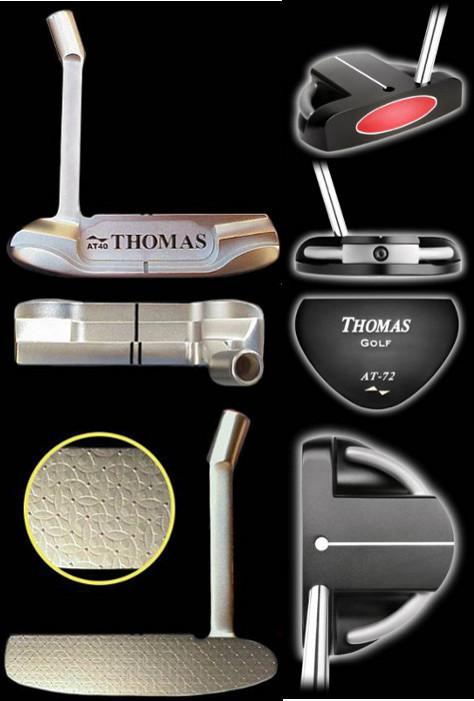
In the current golf climate, different golf companies produce many different types of putter. Choosing the correct one can often be a minefield as they all look and feel so different.
However, it is possible to simplify putters into two different types – a blade headed putter and a mallet headed putter. The following provides a description of both types of putter.
Blade
– A blade headed putter is one where the head of the putter is fairly thin and quite long. The length of the putter head is far bigger than the width.
– Often the shaft of the putter attaches to the heel end of the putter head rather than the middle.
– There are often few markings on the putter head with which to aim correctly because of a lack of room.
Mallet
– A mallet headed putter is a putter that is fairly large and quite chunky. The length and width of putter head are very similar in size and resemble a square in shape.
– Often the putter has a large rounded back with obvious markings to help line up your putt.
– These putters come in all shapes and sizes and can often look like spaceships or branding irons for cattle!
There are benefits to both types of putter, these are the most common ones.
Blade – This type of putter rewards centred hits on the club face. When hit from the centre this type of putter provides fantastic feel and promotes a solid roll of the golf ball on the green. The weighting on this type of putter is not uniform across the putter face and so a putt hit off-centre from the club face will twist the club head and project the ball off line.
A blade putter favours an arc swing or a more arms and hands motion because of the weighting and shape of the club head.
Mallet – The large back of the club head balances the weight of the putter head equally across the face of the putter. This stabilizes the head on off-centre hits meaning that this type of putter is more forgiving.
The large head of the putter means that there are more alignment markings to help the golfer to aim correctly.
This type of putter favours the straight back and through swing as the balance and weight of the putter head is tuned to enable the golfer to swing the putter in a straight line.
So which type of putter will suit you best?
This is a difficult question and really the putter that suits you the best is the one that you are most comfortable with. The key is to try as many different putters as you can until you find one that you like the feel, the weight and the look of. However, because there are so many, as a start point look carefully at your putting stroke to decide whether you suit a blade or mallet putter the best. Here's how:
1. Get yourself to the putting green or on the carpet at home and set out two clubs or alignment sticks parallel to each other, pointing at a target and position them so that they are just over the width of a putter head apart.
2. Hit four or five putts and watch the putter head swing backwards and forwards during the putting stroke.
3. If the putter head swings fairly straight back and through the golf ball you will be more suited to using a mallet headed putter. This is because the weighting on this type of putter suits a more straight back and through motion. If the putter head swings in a more curved fashion from inside, to square, to inside and touches, or nearly touches, the alignment stick or club nearest to you then you are more suited to a blade headed putter. This is because the weighting of a blade putter head will benefit this kind of putting stroke.
4. If you find that your putting stroke suits a particular head of putter but you do not like the feel or look of that type of putter, always go with what you like rather than what may be suited for you as you will always putt better with a putter that you are confident with.
Use these tips and take the time to experiment with different types of putter to lower your scores on the golf course by putting with a putter that fits your style.






